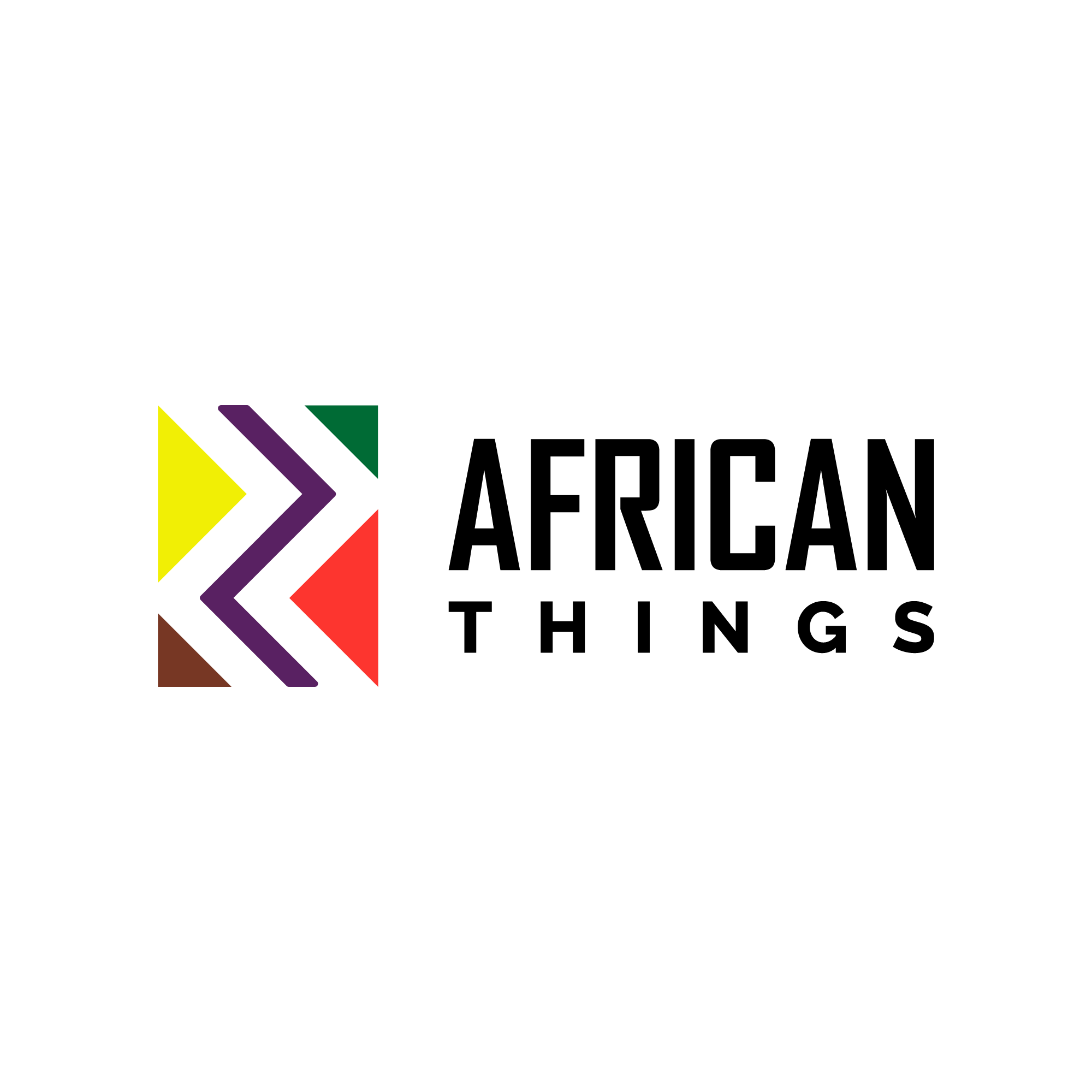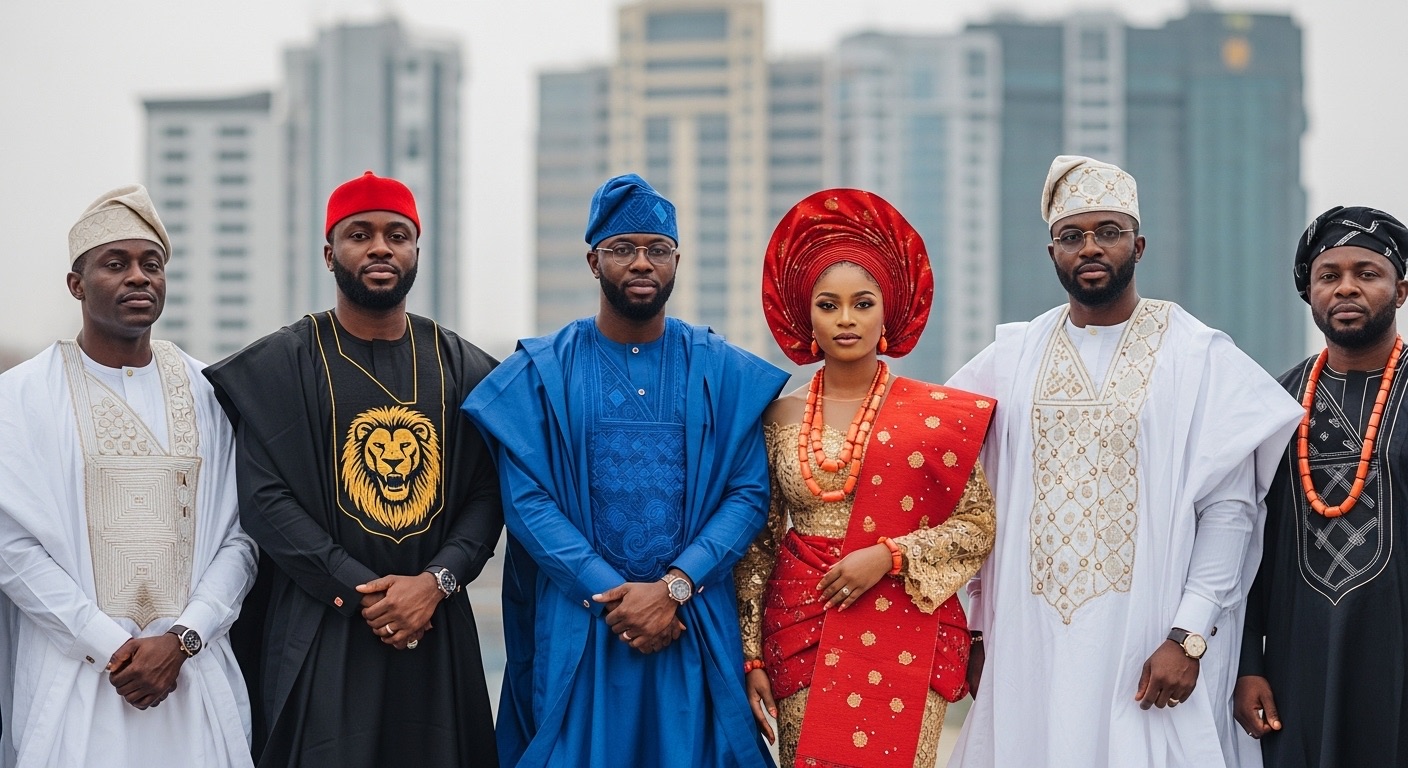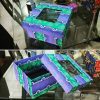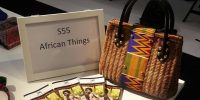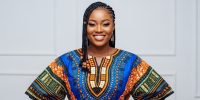Traditional Nigerian Attires and Their Significance: A Complete Cultural Guide
Nigeria’s traditional clothing tells a story that spans centuries—a vibrant tapestry woven with the threads of over 250 ethnic groups, each contributing their unique heritage, artistry, and cultural pride.
From the flowing robes of the North to the elaborate coral regalia of the South, Nigerian traditional attire is far more than fashion; it’s a living expression of identity, spirituality, and communal values that continues to captivate the world.
Whether you’re reconnecting with your roots, planning to attend a Nigerian wedding, or simply curious about Nigeria or African fashion, understanding the significance behind these beautiful garments enriches the experience of wearing and appreciating them.
Table of Contents
Yoruba Traditional Attire
The Yoruba people of southwestern Nigeria (Lagos, Oyo, Osun, Ondo, Ekiti, Ogun states) have created one of Africa’s most recognized traditional clothing systems, centered on hand-woven prestige fabrics worn for over four centuries.
1. Agbada
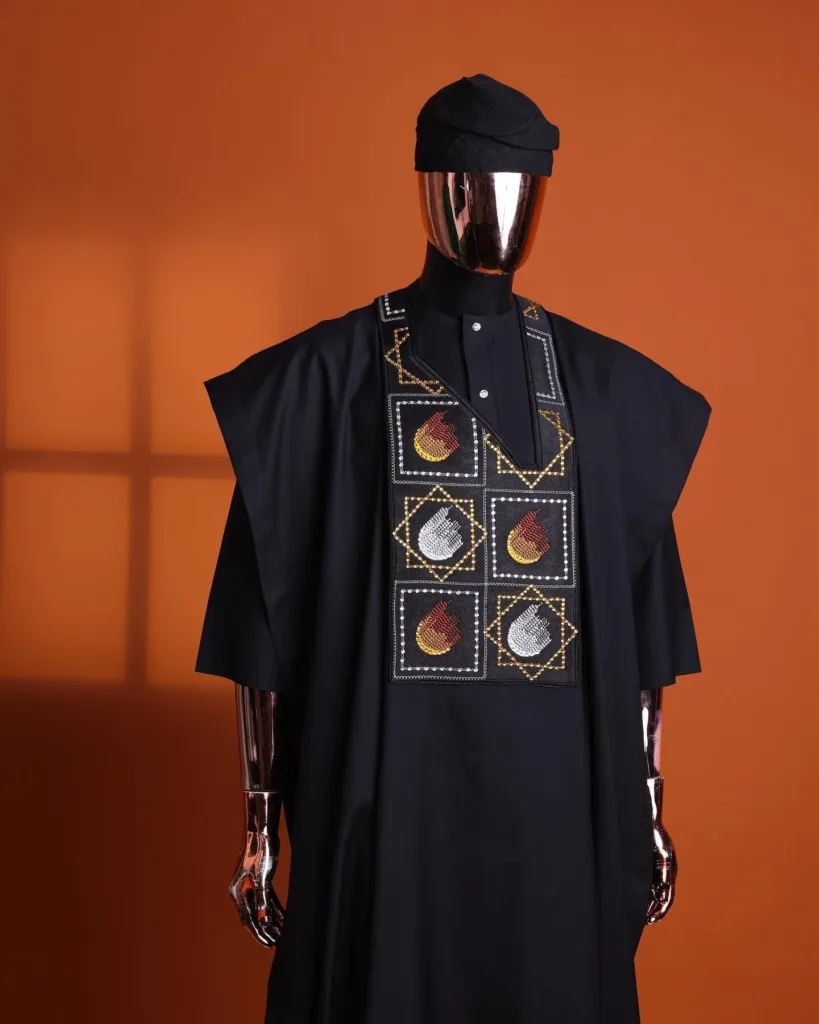
Ethnic Origin: Yoruba (documented since 1772 during Oyo Empire)
Worn By: Men (primarily), occasionally women in modern interpretations
Symbolism: The Agbada represents wealth, status, sophistication, and cultural pride. Historically gifted by Oyo Empire rulers to neighboring kingdoms including Dahomey, symbolizing diplomatic power. The name means “voluminous attire” and the garment commands respect and signifies high social standing.
Materials: Traditional Aso-Oke (hand-woven cloth), Adire (indigo tie-dye), modern versions use brocade, velvet, damask, lace, or Ankara. Features intricate Yoruba embroidery and the distinctive “Grand knot” pattern.
Occasions: Weddings, chieftaincy ceremonies, important political events, festivals, formal celebrations, religious services, coronations. Can be worn casually depending on extravagance.
Distinctive Features: Four-piece ensemble consisting of:
- Awosoke (large free-flowing outer robe reaching ankles)
- Awotele (undervest)
- Sokoto (trousers)
- Fila (cap)
The outer robe has very wide sleeves that must be folded to expose hands. Embroidery typically around neckline and sleeves. Distinguished from North African boubou/babanriga by unique Yoruba construction, styling, and embroidery patterns.
Regional Variations: Styles vary across Yoruba kingdoms—Oyo, Ife, Ijebu each developed distinct patterns. Iseyin area known for superior Aso-Oke production.
Explore Wedding Souvenir Ideas In Nigeria2. Iro and Buba
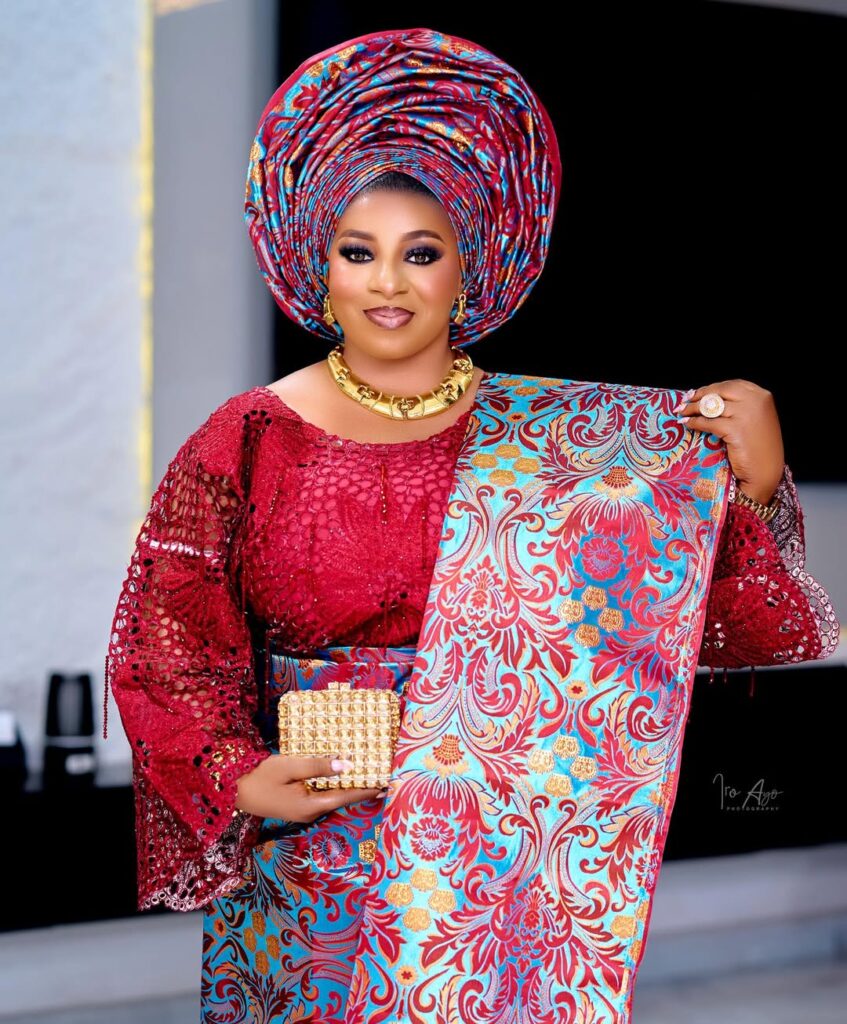
Ethnic Origin: Yoruba
Worn By: Women (all ages and social classes)
Symbolism: Represents Yoruba femininity, elegance, and cultural identity. The coordinated fabrics demonstrate attention to tradition and aesthetic sophistication. Reflects wearer’s taste, social status, and occasion significance.
Materials: Iro (wrapper/skirt) and Buba (blouse) made from Aso-Oke, Adire, Aran, Seghosen, Jawu, Aso Olona, silk, lace, damask, brocade, or Ankara. Buba features various necklines, sleeve lengths, embroidery, and embellishments.
Occasions: Daily wear (simple versions), weddings, festivals, church services, naming ceremonies, important family events. Formality level depends on fabric choice and styling.
Distinctive Features:
- Buba – loose-fitting blouse covering upper body
- Iro – large wrapper around waist covering lower body
- Often paired with Ipele (shawl draped over shoulder) and Gele (elaborate headwrap)
- Can be made from matching or contrasting fabrics
3. Gele
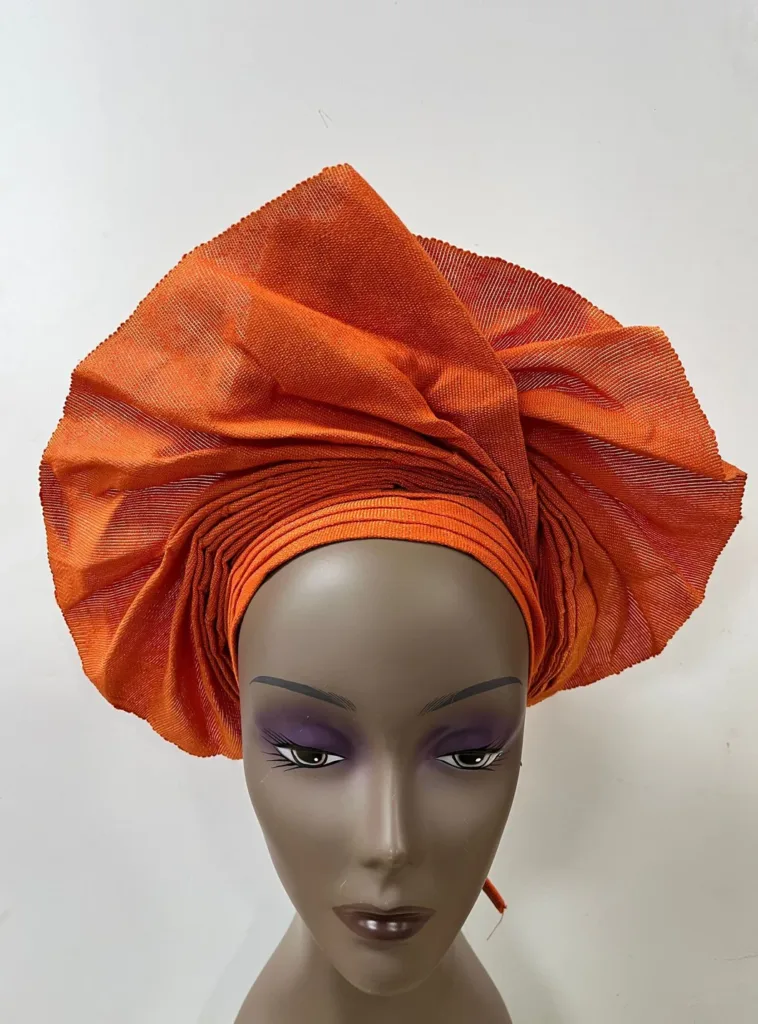
Ethnic Origin: Yoruba (called Gele in Yoruba, though worn across Nigeria)
Worn By: Women exclusively
Symbolism: Represents regal status, femininity, cultural pride, and social sophistication. Considered incomplete without headwrap for formal occasions. The size and intricacy of tying demonstrates the importance of the event.
Materials: Stiff or soft fabrics including Aso-Oke, damask, Adire, Ankara, silk. Modern versions use specially treated fabrics that hold shape.
Occasions: Weddings (most elaborate), church services, festivals, important ceremonies, cultural celebrations, formal portraits.
Distinctive Features: Wrapped around head in various elaborate styles—can take 30+ minutes to tie complex formations. Different shapes convey different aesthetics. More elaborate = more formal occasion. Artfully tied into sculptural designs.
Regional Variations: Styles vary by Yoruba sub-groups and have evolved with fashion trends. Each area has signature tying methods.
4. Aso-Oke
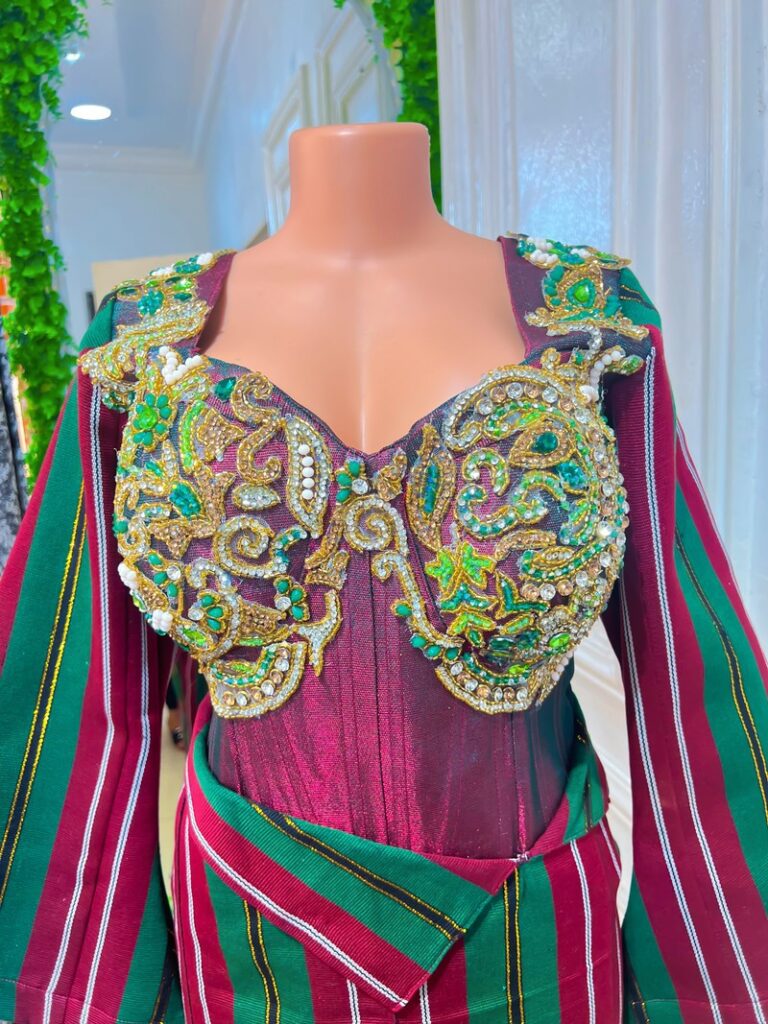
Ethnic Origin: Yoruba (originated late 15th century, centered in Iseyin, Oyo, Ibadan)
Worn By: Men and women (unisex)
Symbolism: Aso-Oke (meaning “top cloth”) is the most prestigious traditional fabric in Nigeria. Represents cultural heritage, social status, and communal pride passed through generations. Used in major life ceremonies to symbolize reverence for tradition and solidarity.
Materials: Traditionally hand-woven from cotton on horizontal looms. Three traditional materials:
- Cotton
- Alari (red imported silk)
- Sanyan (domestic wild raw silk)
Modern versions use rayon and metallic lurex. Production is labor-intensive starting with cotton planting, harvesting, seed extraction, spinning, dyeing, and weaving.
Occasions: Weddings, funerals, naming ceremonies, religious festivals, coronations, chieftaincy installations. Reserved for special occasions due to cost and cultural significance.
Distinctive Features: Narrow strips woven on traditional looms then sewn together. Intricate patterns with cultural meanings. What gave Aso-Oke prestige was not only beauty but knowledge of how costly, difficult, and time-consuming production was. Each piece can take weeks to complete.
Regional Variations: Iseyin area in Oke-Ogun (Oyo State) is historic center. Name derives from “cloth of the people from the hinterland.” Different weaving communities developed signature patterns.
Aso-Oke or Ankara? Chat with us on WhatsApp.5. Fila Men’s Caps
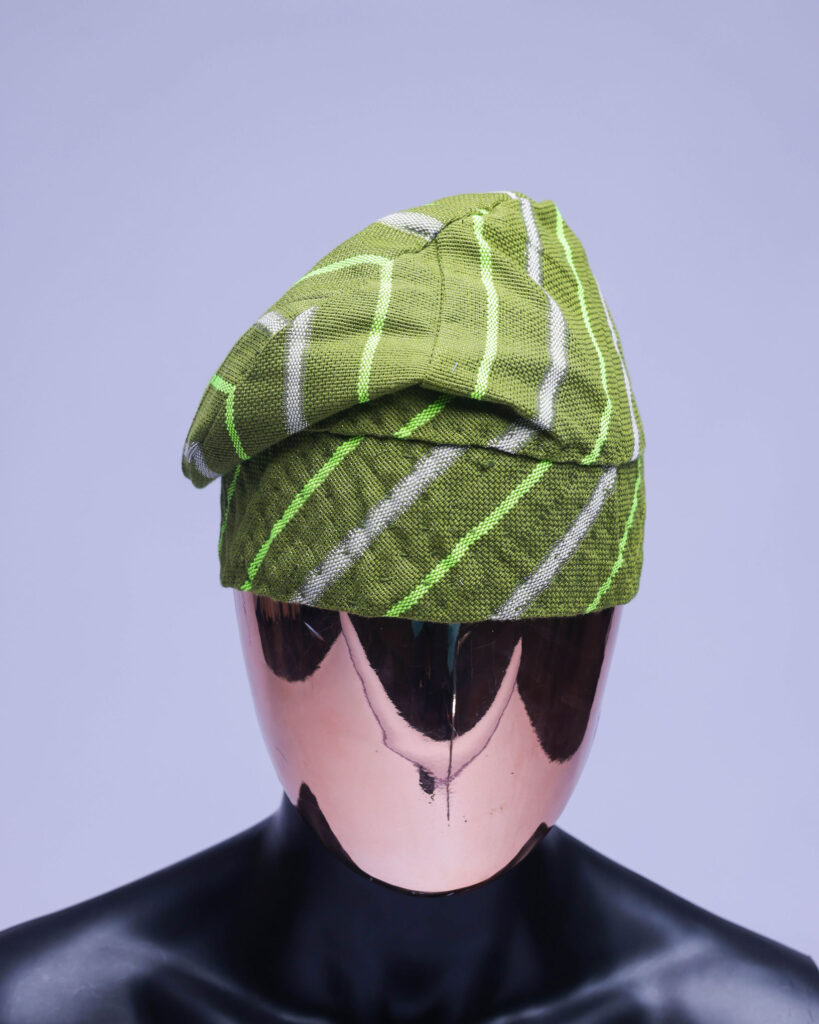
Ethnic Origin: Yoruba
Worn By: Men exclusively
Symbolism: Represents dignity, respect, and completes traditional attire. Essential accessory for Yoruba men—outfit considered incomplete without it. Different styles convey different messages about wearer.
Materials: Aso-Oke, velvet, cotton, sometimes featuring embroidery or patterns.
Occasions: All formal events, religious services, ceremonies, daily wear for elders.
Distinctive Features: Three main types:
- Fila Abeti Aja (dog ear-shaped with two “handles” that can be moved)
- Fila Gobi (with dropped side)
- Fila Kufi (rounded cap from Islamic tradition)
Regional Variations: Each Yoruba kingdom has preferred styles and ways of wearing.
Shop Fila Yoruba Men’s Cap via WhatsApp6. Adire
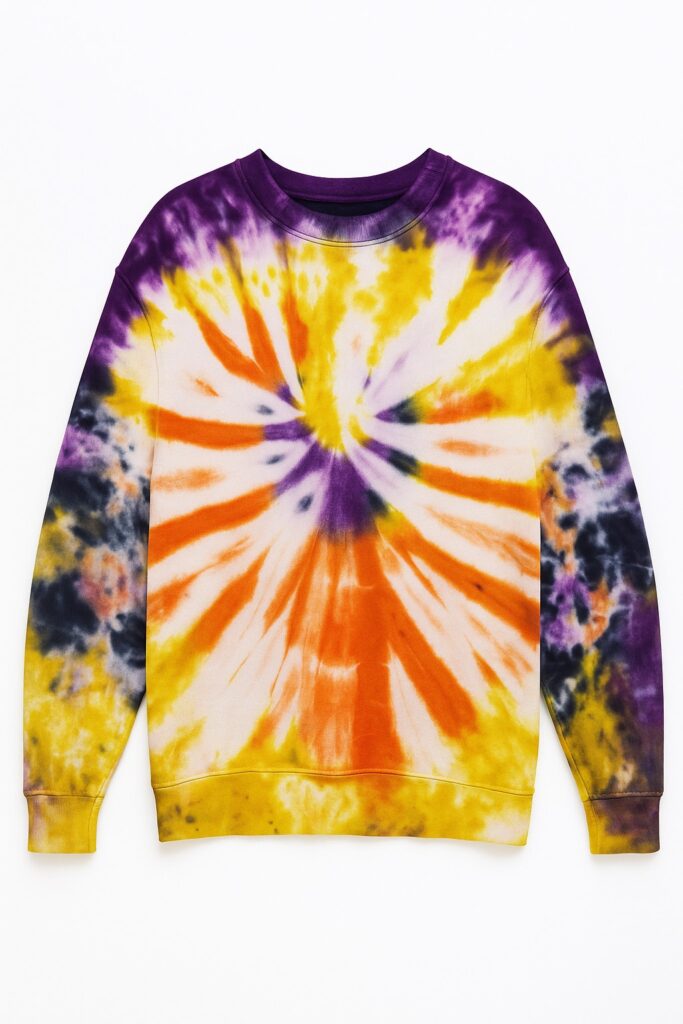
Ethnic Origin: Yoruba (ancient technique)
Worn By: Unisex
Symbolism: Historically used for ritual and ceremonial purposes. Symbol of resistance and unity. Represents indigenous Yoruba dyeing artistry. Patterns tell cultural stories.
Materials: Cotton fabric dyed using indigo with resist-dyeing techniques including Shibori and Eleko methods.
Occasions: Historically ceremonial, now worn for all occasions from casual to formal.
Distinctive Features: Distinctive blue and white patterns created through tie-dye, batik, or stitch-resist methods. Each pattern has traditional meaning.
Regional Variations: Different Yoruba communities developed unique pattern vocabularies and dyeing techniques.
Check Out Our Adire CollectionIgbo Traditional Attire
The Igbo people of southeastern Nigeria (Anambra, Enugu, Imo, Abia, Ebonyi states, parts of Delta) express identity through distinctive traditional clothing emphasizing coral beads, prestigious wrappers, and symbolic motifs.
7. Isiagu – The Lion Head Fabric
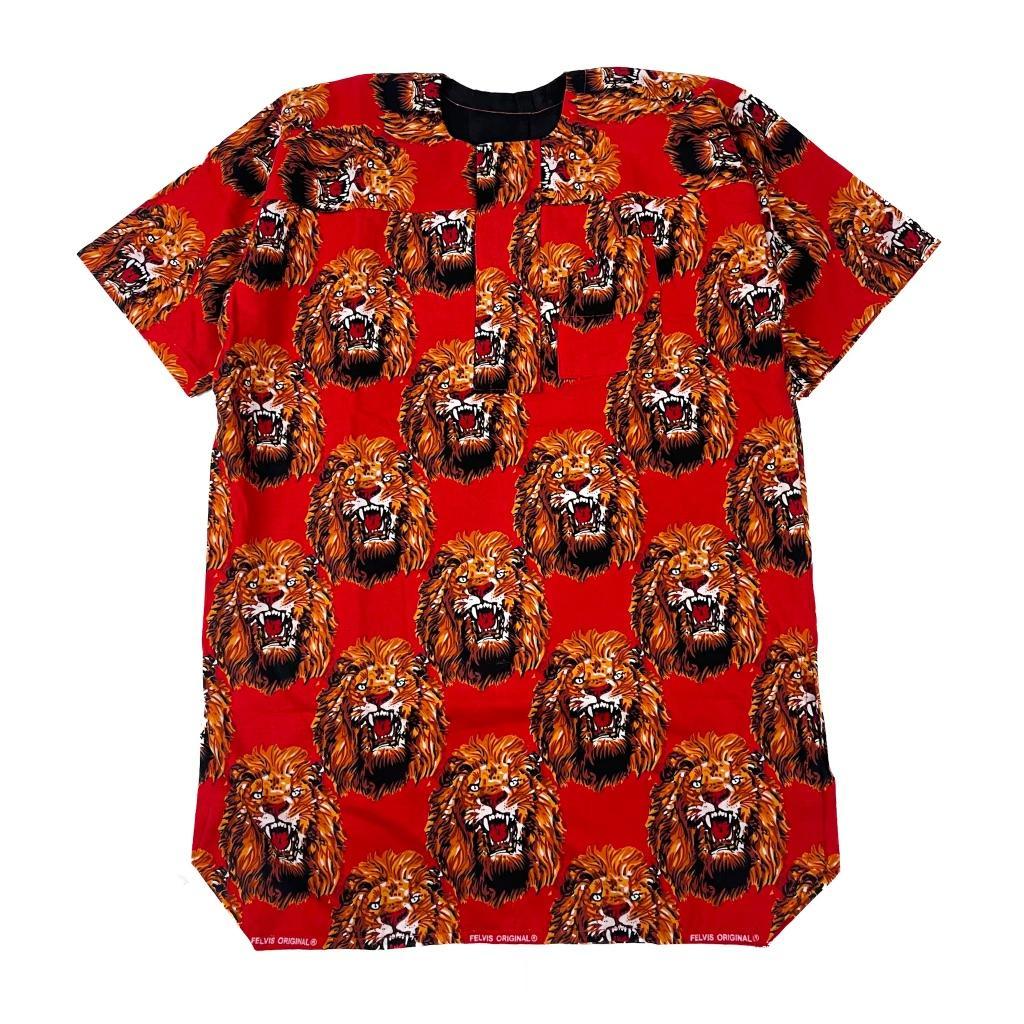
Ethnic Origin: Igbo (gained widespread popularity after Biafra War, though pattern origins debated)
Worn By: Traditionally men (chiefs and title holders), increasingly women in modern times
Symbolism: Also called “Chieftaincy attire,” the Isiagu symbolizes royalty, power, authority, strength, bravery, courage, and cultural pride. The lion/leopard motif represents powerful and revered animals in Igbo folklore. Wearing it signifies possession of these qualities. Represents unity and togetherness—often worn by clan/community members during cultural events to showcase shared identity.
Materials: Richly embroidered fabric made from high-quality velvet, silk, cotton, or brocade. Features lion head or leopard motifs (despite some debate, lions don’t live in Igboland—may represent cultural symbolism rather than local fauna). Modern versions often polyester with printed or embroidered designs.
Occasions: Weddings, chieftaincy ceremonies, coronations, title-taking ceremonies, New Yam Festival (Iri Ji), Ofala Festival, important cultural celebrations. Not everyday wear—reserved for significant events.
Distinctive Features:
- Bold lion/leopard head patterns across fabric
- Worn as tunic/shirt paired with wrapper (tied around waist)
- Okpu Agu (red cap signifying chieftaincy—for titled chiefs only)
- Coral bead necklaces and bracelets
- Walking stick
- Colors often include red (strength), gold, black, burgundy
Regional Variations:
- Anambra – emphasizes gold embroidery and elaborate coral beads
- Enugu – features black/burgundy velvet with golden lion heads, eagle-feathered caps
- Imo – known for flamboyant styling
- Abia – connects to traditional weaving heritage
8. George Wrapper
Ethnic Origin: Igbo (adopted from Indian imports during British colonial trade, named after King George)
Worn By: Men and women
Symbolism: George fabric symbolizes elegance, cultural pride, wealth, and sophistication. For women especially, it’s essential for traditional weddings and ceremonies, representing family affluence and bride’s importance.
Materials: Luxurious heavy silk or silk-blend fabric with intricate embroidered or woven patterns. Original versions hand-woven in India. Features elaborate designs, often metallic threading. Also called “Madras” or “Jorji” (Igbo), “Injiri” (Kalabari).
Types include:
- Plain George
- Bridal George (heavily embellished)
- Intorica George
Occasions: Igba Nkwu (traditional weddings—primary use), title ceremonies, festivals, church services, coronations, high-profile celebrations.
Distinctive Features: Thick, prestigious fabric with weight and sheen. Women typically wear two pieces—”double wrapper” (one at ankle, one at knee level) paired with intricately embroidered lace blouse and Ichafu (headscarf). Men wrap around waist over trousers or under vest. Patterns often geometric or floral.
Regional Variations:
- Anambra – known for layered coral with George
- Imo – emphasizes sequined lace paired with George
9. Akwete Cloth
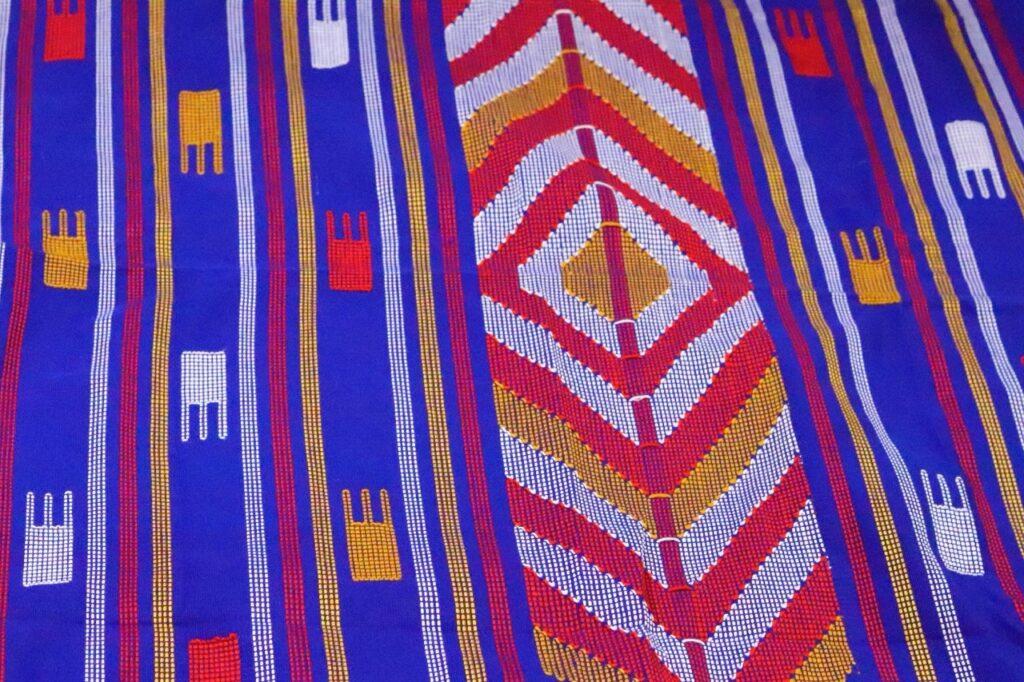
Ethnic Origin: Igbo (specifically from Akwete town in Abia State)
Worn By: Unisex
Symbolism: Akwete represents indigenous Igbo weaving artistry and cultural heritage preservation. Each piece is testimony to skill and creativity of Igbo craftspeople passed through generations. Wearing Akwete connects to ancestral textile traditions.
Materials: Hand-woven using traditional looms from sisal, hemp, raffia, cotton, and other natural fibers. Features over 100 distinct traditional motifs with geometric designs. Takes 2-3 weeks to weave a single piece.
Occasions: Special ceremonies, weddings, festivals, cultural celebrations. Increasingly everyday wear as designers modernize applications.
Distinctive Features: Distinctive hand-woven patterns with complex geometric motifs. Each design element has cultural significance. Texture and quality immediately recognizable as hand-crafted. Color combinations traditional to Igbo aesthetics.
Regional Variations: Akwete town in Abia is primary production center. Ngwa weavers sustain craft through House of Akwaete Weavers cooperative.
10. Ichafu
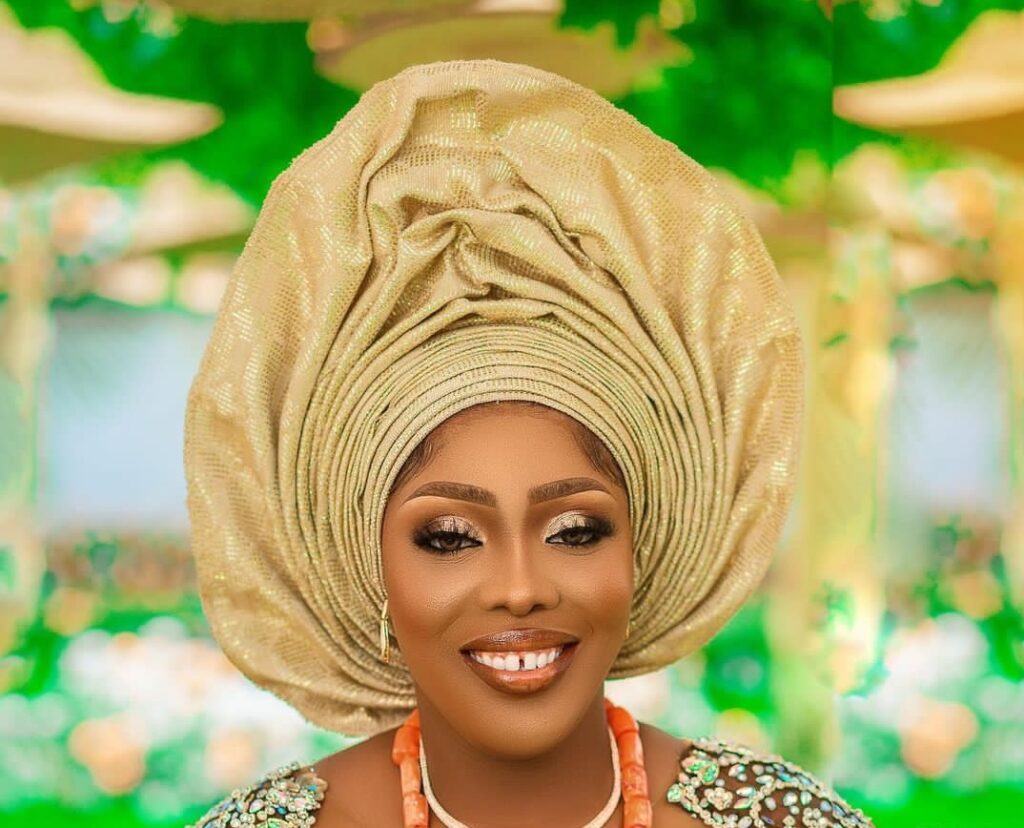
Ethnic Origin: Igbo
Worn By: Women
Symbolism: Ichafu signifies beauty, respectability, and cultural pride. Represents feminine elegance and proper traditional dressing.
Materials: Rich fabrics matching or complementing outfit—George, lace, Ankara, silk, velvet.
Occasions: Weddings, church, festivals, ceremonies, formal events.
Distinctive Features: Tied in various elaborate styles. Igbo name for what Yoruba call “Gele.” Less architecturally elaborate than Yoruba gele but still sophisticated.
Regional Variations: Each Igbo state has preferred tying methods and fabric choices.
11. Coral Beads (Mgbájí)
Ethnic Origin: Igbo (worn since ancient times)
Worn By: Men and women
Symbolism: Coral beads represent wealth, prestige, royalty, beauty, spirituality, and ancestral blessings. Different from Edo coral in cultural meaning and styling. Wearing coral demonstrates social status and connection to tradition.
Materials: Authentic coral beads (red/orange), glass beads. Historically ivory also used. Includes necklaces (Ivie-uru), bracelets, anklets, waist beads, head beads.
Occasions: Weddings (essential), title ceremonies, festivals, important celebrations.
Distinctive Features: Multiple strands worn layered. Igbo use is minimalistic compared to Edo’s abundant application. Men wearing long coral necklaces signify titled status. Women layer with other jewelry.
Regional Variations: Anambra emphasizes heavily layered coral. Other states more subtle applications.
12. Okpu Agu
Ethnic Origin: Igbo
Worn By: Men who have taken chieftaincy titles only
Symbolism: Red cap signifies leadership, authority, respect, and title-holding status within community. Not to be worn by untitled men—doing so is culturally inappropriate.
Materials: Red fabric (often velvet), sometimes decorated with feathers or other embellishments.
Occasions: Any event where chief wears traditional attire—ceremonies, festivals, meetings.
Distinctive Features: Distinctive red color. Various shapes from round to boat-shaped. May include eagle feathers (particularly in Enugu).
Regional Variations: Different Igbo regions have specific cap styles for their titleholders.
13. Akwa Ocha
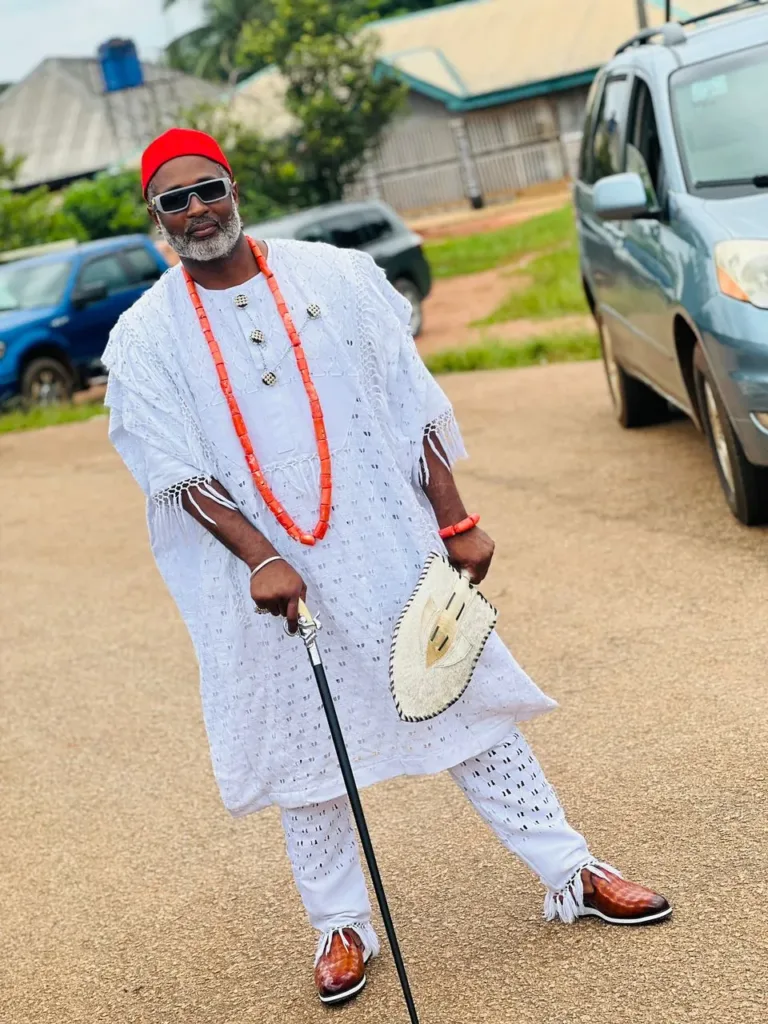
Ethnic Origin: Anioma Igbo (Delta State)
Worn By: Men and women
Symbolism: White represents purity, peace, spirituality. Highly regarded material worn during special occasions and traditional rites.
Materials: White woven cloth, traditionally hand-woven.
Occasions: Traditional ceremonies, festivals, spiritual rituals, important cultural events.
Distinctive Features: Pristine white color. Woven texture. Associated with Anioma cultural practices.
Regional Variations: Primarily Anioma (western Igbo) tradition, though recognized across Igboland.
Hausa-Fulani Traditional Attire
The Hausa and Fulani peoples of northern Nigeria (Kano, Kaduna, Katsina, Sokoto, Zamfara, Bauchi, Jigawa, Borno, Yobe) share similar Islamic-influenced clothing traditions emphasizing modesty, sophistication, and intricate embroidery.
14. Babban Riga / Babanriga
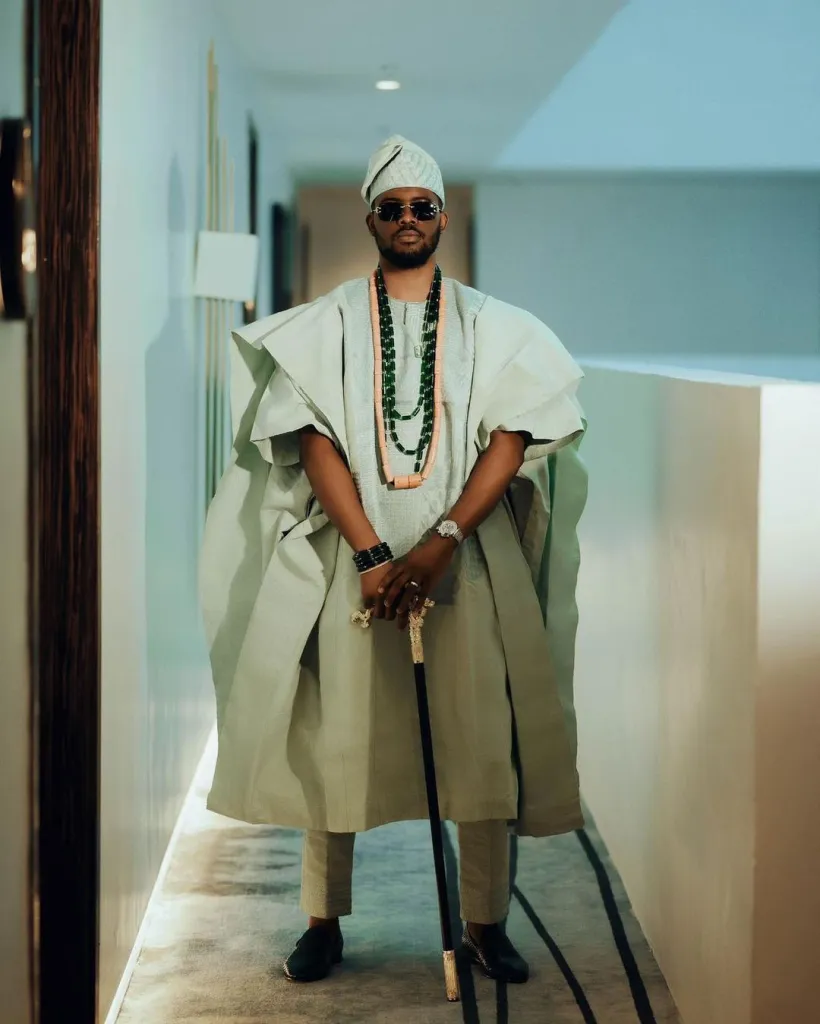
Ethnic Origin: Hausa-Fulani (Northern Nigeria)
Worn By: Men (considered essential formal wear across all Nigerian ethnic groups, though Hausa in origin)
Symbolism: Represents dignity, spiritual devotion, social status, and cultural identity. Though considered Muslim garment, almost all Nigerian men wear one for formal occasions regardless of ethnicity or religion. The flowing nature symbolizes humility and modesty while elaborate embroidery demonstrates wealth and status.
Materials: Various fabrics from simple cotton to luxurious damask, brocade, or silk. Features elaborate embroidery (Zari work) around neck, chest, and sleeves—embroidery quality indicates wearer’s status. Often in white, cream, blue, or rich colors.
Occasions: Sallah festivals (Eid celebrations), weddings, Friday prayers, political events, chieftaincy installations, important ceremonies, formal gatherings.
Distinctive Features: Large, free-flowing robe with floor-length hem and very wide sleeves that must be folded up. Similar to Yoruba Agbada but distinguished by Northern embroidery patterns, construction details, and styling.
Four-piece outfit includes:
- Riga (robe)
- Buba/vest (undershirt)
- Sokoto (trousers)
- Cap
Embroidery concentrated around neckline in intricate geometric and floral Islamic-influenced patterns.
Regional Variations: Different Northern states have signature embroidery styles. Kano embroidery particularly renowned.
15. Kaftan / Jalabiya
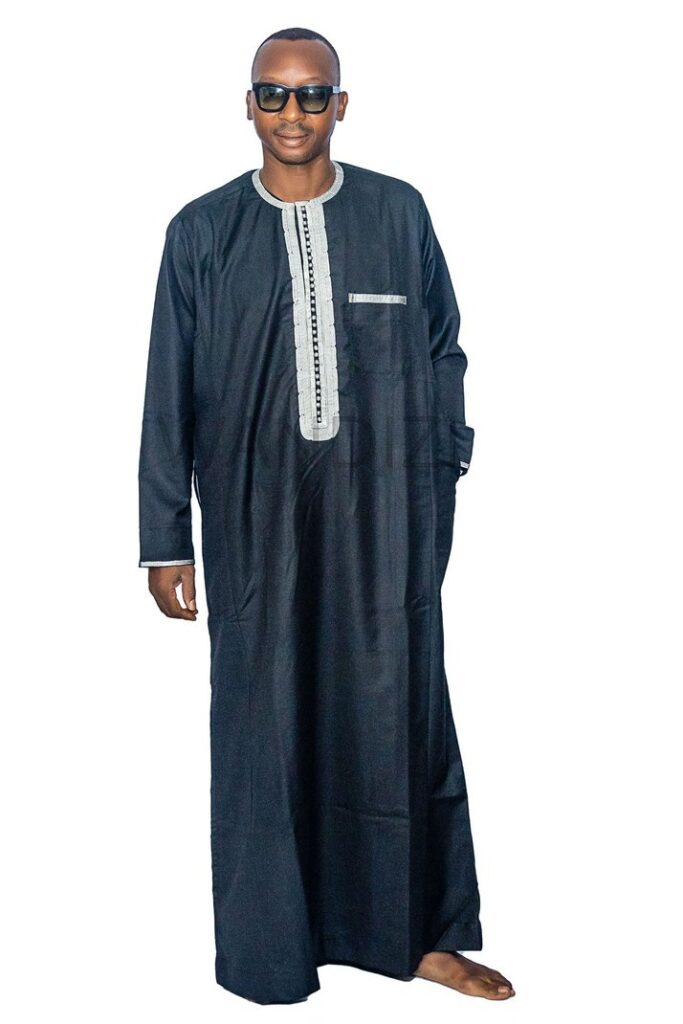
Ethnic Origin: Hausa-Fulani-Kanuri (influenced by Middle Eastern/Arab traditions)
Worn By: Men and women (unisex)
Symbolism: Jalabiya represents simplicity, comfort, and Islamic modesty. Kaftan signifies elegance and has become symbol of Nigerian style due to its minimalist sophistication.
Materials: Cotton, linen, silk, or polyester. Long, loose-fitting garment. Jalabiya typically simpler; Kaftan more elaborate with embroidery. Various styles from minimalist to richly embellished. Can be collarless and hoodless.
Occasions: Daily wear (simple versions), religious gatherings (mosques), Sallah celebrations, weddings, formal events (embellished versions).
Distinctive Features:
- Jalabiya: Long flowing gown reaching ankles, statement of style in simplicity, can be plain or patterned
- Kaftan: Two-piece clothing with sleeved garment and long pants, or single long garment. Long or short sleeves. Very popular across Nigeria beyond Northern origin
Regional Variations: Northern versions typically more modest and traditional. Southern adaptations often more fashion-forward.
16. Hula / Fula Men’s Traditional Cap
Ethnic Origin: Hausa-Fulani
Worn By: Men
Symbolism: Completes traditional attire. Represents Islamic identity and cultural heritage. Different styles convey regional identity.
Materials: Cotton, velvet, or embroidered fabric. Often decorated with intricate embroidery.
Occasions: All traditional and formal events, daily wear, religious services.
Distinctive Features: Round cap with various embroidery patterns. Can signify social status or region of origin based on decoration.
Regional Variations: Each Northern state has characteristic embroidery patterns and styles.
17. Tagelmust – Fulani Turban
Ethnic Origin: Fulani
Worn By: Fulani men (particularly elders and traditionalists)
Symbolism: Represents Fulani nomadic heritage, wisdom, and masculine identity. Traditional headwear of cattle herders and pastoralists.
Materials: Long cloth wrapped as turban. Often indigo-dyed.
Occasions: Daily wear for traditional Fulani men, cultural festivals, ceremonies.
Distinctive Features: Distinctive turban wrapping style unique to Fulani. Elders particularly associated with wearing.
Regional Variations: Fulani communities across Northern Nigeria each have wrapping variations.
18. Zani – Women’s Wrapper
Ethnic Origin: Hausa-Fulani
Worn By: Women
Symbolism: Represents modesty, elegance, and cultural identity. Colorful patterns demonstrate joy within modest framework.
Materials: Wrapper (Zani) made from colorful Atampa fabric or Ankara prints. Worn with matching blouse, headscarf (Kallabi), and shawl (Gyale).
Occasions: Daily wear, ceremonies, markets, religious gatherings, festivals.
Distinctive Features: Bright colors and patterns within modest coverage. Typically worn with hijab or headscarf. Full coverage reflecting Islamic modesty requirements while maintaining vibrant aesthetics.
Regional Variations: Different Northern communities have color and pattern preferences.
19. Fulani Women’s Distinctive Attire
Ethnic Origin: Fulani
Worn By: Fulani women
Symbolism: Represents Fulani pastoral heritage and femininity. Distinctive styling sets Fulani women apart visually.
Materials: Modestly colored garments in red, blue, and green delicately woven into white. Traditional jewelry including amber beads, gold, silver.
Occasions: Cultural festivals, weddings, daily wear in traditional communities.
Distinctive Features: Unique color combinations (red/blue/green on white). Distinctive hairstyles and jewelry. Traditional face markings in some communities. Nomadic lifestyle influences practical yet elegant styling.
Regional Variations: Settled Fulani (town-dwelling) vs. pastoral Fulani have different styling approaches.
Edo Traditional Attire
The Edo people of Edo State (centered in Benin City) maintain one of Nigeria’s most elaborate royal traditions, with coral beads as the defining element of traditional dress.
20. Oba’s Royal Regalia
Ethnic Origin: Edo (Benin Kingdom)
Worn By: The Oba (King of Benin) exclusively
Symbolism: Represents divine kingship, spiritual authority, and connection between earthly and spiritual realms. The Oba is seen as semi-divine, and his regalia reflects this sacred status. Coral beads (Ivie and Ekan) represent royal privilege historically controlled by the Oba.
Materials: Extensive coral beadwork covering virtually entire body—coral necklaces, coral crown, coral robes and capes. White hand-woven cloth (signifying purity and spiritual authority). Royal beaded regalia can weigh significantly, demonstrating physical strength of ruler.
Occasions: Coronations, major palace ceremonies, important state functions, annual festivals like Igue Festival.
Distinctive Features:
- Coral crown (Okoro-Ovia)
- Multiple layers of coral beads covering chest and arms
- Coral-beaded cape (Ewu-Ivie)
- White ceremonial cloth
- Royal scepter and other symbols of authority
The abundance of coral far exceeds any other Nigerian culture’s use—immediate visual marker of Edo royalty.
Cultural Significance: Red (Ododo) serves as the royal color in Edo culture. The Oba historically controlled coral distribution as both privilege and governance tool. Unauthorized use of coral could result in punishment.
21. Edo Men’s Traditional Wrapper with Chieftaincy Shirt
Ethnic Origin: Edo
Worn By: Men (particularly chiefs and titled individuals)
Symbolism: Represents status, cultural pride, and connection to Benin Kingdom heritage. Demonstrates respect for tradition and ceremonial occasions.
Materials:
- White shirt (often with multi-colored embroidered details)
- Wrapper tied around waist (George or other prestige fabrics)
- Coral beads (necklaces and bracelets)
- Walking stick (symbol of authority and wisdom)
- Traditional cap or hat
Occasions: Traditional weddings, palace ceremonies, chieftaincy installations, festivals, cultural celebrations.
Distinctive Features: The white shirt paired with rich wrapper fabric. Coral beads less abundant than royal regalia but still significant. Walking stick completes the ensemble as symbol of eldership and authority.
Regional Variations: Benin City serves as cultural center, with styling radiating outward to other Edo communities.
22. Edo Bridal Ensemble with Okuku Crown and Ewu-Ivie
Ethnic Origin: Edo
Worn By: Brides during traditional wedding ceremonies
Symbolism: Represents purity, beauty, family honor, and transition to married life. The elaborate coral beadwork demonstrates family wealth and importance of bride. Red (Ododo) as royal color makes red elements particularly significant.
Materials:
- Okuku (traditional coral crown worn by brides)
- Ewu-Ivie (elaborate coral bead cape covering shoulders and chest)
- Multiple strands of coral beads (necklaces, bracelets, anklets, waist beads)
- Red wrapper or dress (Ododo – royal red)
- Intricate blouse with embroidery
- Traditional face painting or marks (in some families)
Occasions: Traditional wedding ceremonies (primary), important family celebrations where bride is honored.
Distinctive Features: The Okuku crown is distinctive to Edo brides—elaborate coral beadwork shaped into crown form. The Ewu-Ivie cape creates dramatic visual impact with its weight and abundance of coral. Red color dominates palette, distinguishing from other Nigerian bridal traditions.
Cultural Protocol: Families begin accumulating coral beads years before daughter’s wedding. Authentic coral commands high prices, making complete set significant investment and status symbol.
Ijaw Traditional Attire
The Ijaw people (Bayelsa, Rivers, Delta states—Niger Delta region) have clothing traditions reflecting their riverine heritage and historical trading connections.
23. Etibo / Uoko Ensemble – Men’s Traditional Attire
Ethnic Origin: Ijaw
Worn By: Men
Symbolism: Represents Ijaw identity, cultural pride, and connection to Niger Delta heritage. Demonstrates social status and respect for tradition.
Materials:
- Etibo or Uoko (long-sleeved shirt, often white or cream)
- George wrapper (luxurious fabric tied around waist)
- Traditional hat (various styles including bowler or fedora-type)
- Coral beads (necklaces and bracelets)
- Walking stick (symbol of authority and status)
Occasions: Traditional weddings, festivals, chieftaincy ceremonies, cultural celebrations, important family events.
Distinctive Features: The combination of long-sleeved shirt with George wrapper creates sophisticated silhouette. Hat choice distinguishes Ijaw styling from other Niger Delta groups. Coral beads used moderately—less than Edo, more than some other groups.
Regional Variations: Different Ijaw communities across Bayelsa, Rivers, and Delta states have styling preferences.
24. Ijaw Women’s Blouse and George Wrapper
Ethnic Origin: Ijaw
Worn By: Women
Symbolism: Represents feminine beauty, cultural pride, and family prosperity. Particularly significant during Iria ceremony (coming-of-age celebration for girls), emphasizing transition to womanhood.
Materials:
- Loose-fitting embroidered blouse (often white or pastel colors)
- Two George wrappers (double wrapper system—one at ankle, one at knee)
- Headwrap (Ichafu/Gele style)
- Coral beads and jewelry
- Intricate embroidery and lace details
Occasions: Iria ceremony (primary), traditional weddings, festivals, church services, important celebrations.
Distinctive Features: The two-wrapper system creates elegant layered look. Loose-fitting blouse emphasizes modesty while allowing decorative embroidery. Coral accessories demonstrate status without Edo-level abundance.
Iria Ceremony Significance: This coming-of-age ceremony celebrates young women reaching marriageable age. The elaborate George wrapper ensemble marks this important transition and showcases family’s investment in daughter’s future.
Regional Variations: Coastal Ijaw communities vs. mainland communities have slight styling differences.
Ibibio Traditional Attire
The Ibibio people of Akwa Ibom State maintain traditional clothing emphasizing community values, modesty, and cultural pride.
25. Usobo with Chieftaincy Shirt – Men’s Traditional Attire
Ethnic Origin: Ibibio
Worn By: Men (particularly titled individuals and elders)
Symbolism: Represents leadership, cultural heritage, and community respect. Walking stick symbolizes wisdom and authority.
Materials:
- Chieftaincy shirt (often white with embroidered motifs)
- Usobo (wrapper tied around waist in asymmetrical style)
- Walking stick (essential accessory symbolizing eldership)
- Traditional cap
- Minimal jewelry (coral beads in moderation)
Occasions: Traditional ceremonies, chieftaincy installations, festivals, community meetings, weddings.
Distinctive Features: The asymmetrical wrapper styling distinguishes Ibibio from neighboring groups. Embroidered motifs on shirt carry cultural meanings specific to Ibibio heritage. Walking stick is essential—outfit incomplete without it.
Regional Variations: Different Ibibio communities across Akwa Ibom have local styling variations.
26. Nkwa Iso with Blouse and Gela – Women’s Traditional Attire
Ethnic Origin: Ibibio
Worn By: Women
Symbolism: Color symbolism plays significant role:
- Red – life and vitality
- White – purity and peace
- Black – strength and endurance
Represents feminine beauty, cultural identity, and proper traditional dressing.
Materials:
- Nkwa Iso (wrap skirt in traditional colors)
- Matching blouse with embroidery
- Gela (headwrap – Ibibio term for head tie)
- Minimal coral beads (very understated compared to other southern groups)
Occasions: Traditional weddings, church services, festivals, cultural celebrations, family ceremonies.
Distinctive Features: Color choices carry deep symbolic meaning. Styling emphasizes modesty and elegance over ostentation. Jewelry use very minimalistic—values subtlety.
Regional Variations: Different Ibibio clans have traditional color combinations and pattern preferences.
Modern Adaptations: Contemporary blouse designs. Modern fabrics in traditional colors. Maintains cultural color symbolism.
27. Ofod Ukod Anwang – Maiden Attire
Ethnic Origin: Ibibio
Worn By: Young unmarried women
Symbolism: Celebrates feminine beauty, youth, and cultural celebration. Designed to showcase waist and feminine form. Connected to Ekombi dance tradition.
Materials:
- Wrapper tied to emphasize waist
- Minimal top (traditional styling)
- Beads and jewelry appropriate for maidens
- Traditional body decoration
Occasions: Ekombi dance performances, cultural festivals, coming-of-age celebrations, traditional ceremonies celebrating youth.
Distinctive Features: Emphasizes youthful beauty and grace. Tied in specific way to allow freedom of movement for dancing. Distinct from married women’s attire in styling and embellishment level.
Cultural Context: Ekombi dance is important Ibibio cultural expression where young women perform. Attire designed specifically for this dance tradition.
Efik Traditional Attire
The Efik people of Cross River State (Calabar area) have the most elaborate traditional attire in South-South Nigeria, influenced by historical European trade.
28. Usobo with Okpomkpomon and Akwa Iban Isong
Ethnic Origin: Efik
Worn By: Men (particularly for important ceremonies)
Symbolism: Represents sophistication, cultural refinement, and historical trade connections. Reflects Calabar’s position as major trading port with European contact.
Materials:
- Okpomkpomon (long-sleeved shirt with European influences)
- Akwa Iban Isong (prestige wrapper)
- Top hat or bowler hat (European-influenced)
- Walking stick (often ornate)
- Coral beads (abundant use)
- White handkerchief
- Formal shoes
Occasions: Traditional weddings, title ceremonies, major festivals, coronations, high-profile cultural events.
Distinctive Features: Most elaborate men’s attire in South-South Nigeria. European-influenced styling (top hat, formal presentation) blended with traditional wrapper and coral beads. Creates uniquely sophisticated aesthetic distinguishing Efik from other groups.
Regional Variations: Calabar serves as cultural center for Efik people. Urban sophistication reflected in styling.
29. Onyonyo – Victorian-Style Ball Gown
Ethnic Origin: Efik
Worn By: Brides during traditional wedding ceremonies
Symbolism: Represents the most elaborate bridal attire in Nigeria. Symbolizes family wealth, bride’s importance, cultural pride, and historical European connections. The name “Onyonyo” itself carries significance in Efik language.
Materials:
- Victorian-style ball gown (full skirt with petticoats, often white or cream)
- Extensive coral beadwork (multiple heavy strands covering chest and arms)
- Elaborate headdress with coral beads
- Lace and embroidery details
- White gloves (traditional element)
- Formal accessories befitting ball gown styling
Occasions: Traditional Efik weddings (primary use), significant cultural presentations, important family ceremonies.
Distinctive Features: The Victorian ball gown silhouette is unique in Nigerian traditional attire—full skirts with petticoats, fitted bodice, formal presentation. Combined with abundant coral beadwork creating dramatic visual impact. Most expensive and labor-intensive bridal attire in Nigeria.
Cultural Context: Reflects Calabar’s historical role as major trading port with significant European contact. Cultural exchange influenced fashion while maintaining distinctly Efik identity.
Other Significant Ethnic Groups
30. Tiv People – Black and White Striped Heritage Cloth
Ethnic Origin: Tiv (Benue State, Middle Belt region)
Worn By: Men and women (unisex)
Traditional Name: Anger (also called A’nger)
Symbolism: The distinctive black and white stripes honor Tiv heritage and connection to zebras, whose skins they traditionally used before migrating to current homeland. When they discovered zebras were not native to new region, they chose to replicate the pattern in woven cloth to maintain cultural memory. Represents adaptability, heritage preservation, and cultural identity.
Materials: Hand-woven black and white striped fabric, traditionally cotton. Geometric striped patterns.
Occasions: Weddings, festivals, traditional ceremonies, cultural celebrations, daily wear in traditional communities.
Distinctive Features: Unmistakable black and white horizontal or vertical stripes. Traditionally draped around torso. Modern versions fashioned into robes, dresses, shirts, trousers, various garments. One of the most visually distinctive traditional fabrics in Nigeria.
Regional Variations: Tiv communities across Benue have different styling preferences but maintain signature striped pattern.
31. Kanuri People – Northeastern Embroidered Elegance
Ethnic Origin: Kanuri (Borno State, northeastern Nigeria; historically Kanem-Bornu Empire)
Worn By: Men and women
Symbolism: Reflects rich cultural heritage of one of Africa’s longest-lasting empires. Represents elegance, Islamic influence, and historical prominence.
Materials: Men wear richly embroidered robes (Babban Riga) similar to Hausa styling. Women wear brightly colored caftans decorated with veils and jewelry. Emphasis on intricate embroidery.
Occasions: Weddings, Sallah celebrations, cultural festivals, formal ceremonies.
Distinctive Features: Shares similarities with Hausa-Fulani styling but with distinctive Kanuri embroidery patterns and color preferences. Women’s attire particularly colorful.
Regional Variations: Borno State styling center. Influences from Lake Chad region cultural connections.
32. Urhobo and Isoko People – Delta Central Traditions
Ethnic Origin: Urhobo and Isoko (Delta State—Central and South)
Worn By: Men and women
Symbolism: These closely related peoples share cultural similarities including clothing traditions. Represents Delta heritage and academic/mental achievement orientation.
Materials: Men:
- White lace shirts (or pastel shades)
- George wrappers
- Black cowboy hats (distinctive element)
- Walking sticks
- Coral bracelets and necklaces
Women:
- Two wrappers from same material as men’s
- Matching blouse
- Head tie
- Coral accessories
Occasions: Traditional weddings, ceremonies, festivals, church services.
Distinctive Features: The cowboy hat is particularly distinctive element setting Urhobo/Isoko styling apart from all other Nigerian groups. White or pastel lace shirts. Both genders accessorize heavily with coral beads. Georgian wrapper fabric.
Regional Variations: Delta Central and Delta South have slight variations. Urhobo fifth largest ethnic group in Nigeria.
33. Itsekiri People – Delta South Mixed Heritage
Ethnic Origin: Itsekiri (Delta State—Warri area)
Worn By: Men and women
Symbolism: Reflects mixed ethnic origins—language related to Yoruba and Igala, but also adopted from Edo (Benin). Represents trading heritage and riverine sophistication.
Materials: Men:
- Long-sleeved shirt called Kemeje (distinctive to Itsekiri)
- George wrapper tied around waist
- Feathered hat
- Coral beads and walking stick
Women’s attire similar to neighboring groups.
Occasions: Traditional ceremonies, festivals, coronations, weddings.
Distinctive Features: Kemeje shirt distinctive to Itsekiri. Feathered hats. Royal attire in white with colored girdle depending on occasion.
Regional Variations: Warri North, Warri South, Warri South West local government areas.
34. Nupe People – Middle Belt Craftsmanship
Ethnic Origin: Nupe (Niger and Kwara States, North-Central Nigeria)
Worn By: Men and women
Symbolism: Represents communal values, pastoral simplicity, and craftsmanship heritage (renowned for brass and glass bead work). Quiet, modest nature reflected in clothing choices.
Materials: Similar to Hausa dressing with social system modeled after Caliphate/Emirate structure. Traditional textiles and brass/glass bead work decorations.
Occasions: Ceremonies, festivals, markets, daily wear.
Distinctive Features: Shares styling with Hausa but maintains distinct Nupe identity. Known for decorative beadwork incorporated into accessories.
Regional Variations: Niger State and Kwara State Nupe communities have slight variations.
35. Idoma People – Benue Cultural Expressions
Ethnic Origin: Idoma (Benue State, North-Central Nigeria)
Traditional Name: Red and black striped material
Worn By: Men and women
Symbolism: Distinctive red and black color pattern represents Idoma identity and heritage.
Materials: Red and black striped woven fabric, similar concept to Tiv but different color scheme.
Occasions: Traditional ceremonies, festivals, cultural celebrations.
Distinctive Features: Red and black stripes distinguish from Tiv’s black and white. Color combination immediately identifies Idoma heritage.
Regional Variations: Benue State Idoma communities.
Understanding Cultural Appreciation vs. Appropriation
As Nigerian traditional attire gains international recognition, understanding respectful engagement matters:
Encourage:
- Learning about cultural significance before wearing
- Purchasing from authentic sources supporting Nigerian artisans
- Wearing respectfully at appropriate occasions
- Asking questions and seeking to understand
Be Mindful Of:
- Some items carry restrictions (like Okpu Agu red cap for titled Igbo chiefs only)
- Sacred or ceremonial items shouldn’t be worn as costumes
- Understanding which occasions are appropriate for specific attires
- Representing origins accurately
Frequently Asked Questions: Traditional Nigerian Fabrics & Fashion
What’s the difference between Ankara and African print?
Ankara is a specific type of African wax print fabric—originally made by Dutch manufacturers. It features vibrant, bold patterns and became a central part of Nigerian fashion. “African print” is a broader term that includes Ankara and other regional textiles.
Can I wear traditional Nigerian clothing if I’m not Nigerian?
Yes, you can. It’s perfectly fine to wear traditional Nigerian outfits as long as you do so with cultural respect and understanding. Learn about the meaning of the garment and wear it appropriately for the occasion.
How do I tie a gele?
Tying a gele—a traditional Nigerian headwrap—takes practice. You can find plenty of step-by-step tutorials on YouTube. For beginners, pre-tied “auto-gele” options are also available for convenience.
What should I wear to a Nigerian wedding as a guest?
Guests often wear “aso-ebi”—a coordinated fabric chosen by the hosts. Always check with them to ensure your outfit fits the dress code. Avoid dressing like the bridal party unless you are part of it.
How long does custom tailoring take in Nigeria?
Custom tailoring typically takes 2–4 weeks, depending on the complexity of the design. Handmade details and embroidery may require additional time to achieve perfect craftsmanship.
How do I care for traditional Nigerian fabrics?
- Aso-Oke: Dry clean or hand wash cold and lay flat to dry.
- Ankara/Wax Print: Hand wash or use gentle machine cycle with cold water and air dry.
- Adire: Hand wash separately in cold water as color may bleed initially. Air dry and iron on medium heat.
- Lace: Hand wash gently or dry clean if heavily embellished.
- George: Dry clean only for best results.
- Velvet (Isiagu): Dry clean and brush gently to maintain its texture. Store flat or on a hanger.
Top Nigerian traditional dresses for men
Nigerian men have a rich variety of traditional attire that reflects the country’s diverse cultural heritage. Here are the top 10 traditional dresses for men:
- Agbada: The grand flowing robe worn over buba and sokoto. This three-piece ensemble is the epitome of Nigerian formal wear, perfect for weddings, chieftaincy ceremonies, and important celebrations. The wide sleeves and intricate embroidery showcase prestige and elegance.
- Dashiki: A colorful loose-fitting shirt featuring intricate embroidery around the neckline and chest. Originally from West Africa, the dashiki is ideal for casual outings, cultural events, and semi-formal occasions. It’s comfortable, stylish, and makes a bold statement.
- Senator Wear: Modern traditional attire consisting of a tailored tunic top and matching trousers. Popular among politicians, businessmen, and professionals, this outfit strikes the perfect balance between traditional and contemporary style. Perfect for office wear and formal meetings.
- Isiagu (Chieftain Wear): The iconic Igbo traditional shirt featuring distinctive lion head motifs on velvet or cotton fabric. Symbolizing strength, courage, and leadership, Isiagu is worn during cultural festivals, traditional weddings, and chieftaincy title ceremonies. Often paired with a red cap and walking stick.
- Buba and Sokoto: Classic Yoruba two-piece outfit consisting of a loose-fitting top (buba) and trousers (sokoto). Versatile and comfortable, this ensemble works for various occasions from casual family gatherings to religious ceremonies. Can be made from various fabrics including Ankara, lace, or cotton.
- Kaftan: A long flowing robe that’s especially common in Northern Nigeria. This comfortable and elegant garment is perfect for hot weather and formal occasions. Often made from damask, lace, or brocade fabric with beautiful embroidery, the kaftan exudes sophistication and cultural pride.
- Bariga: Traditional Yoruba outfit featuring a shorter buba and fitted pants, offering a more streamlined silhouette than the typical buba and sokoto. Popular for its neat appearance and ease of movement, making it suitable for both formal and semi-formal events.
- Etibo and Kembe: Distinctive Yoruba attire consisting of an embroidered shirt (etibo) and a wrapper (kembe) tied at the waist. Worn primarily for traditional ceremonies, cultural festivals, and heritage celebrations. The outfit represents deep cultural roots and is often paired with a fila (cap).
- Danshiki Suit: A modern fusion style that incorporates traditional dashiki patterns and embroidery into Western-style suits and blazers. Perfect for men who want to honor their heritage while maintaining a contemporary professional look. Ideal for business casual settings and creative industries.
- Native Jumper: Contemporary short-sleeved traditional shirt paired with matching trousers. This modern interpretation of Nigerian traditional wear is perfect for everyday wear, church services, casual weddings, and social gatherings. Comfortable, stylish, and easy to accessorize.
Each of these traditional dresses can be customized with different fabrics, colors, and embroidery to suit personal style and occasion. At AfricanThings.org, we celebrate these beautiful traditions with our collection of African-inspired men’s wear including dashiki shirts and Kente ties.
Top Nigerian traditional dresses for women
Nigerian women’s traditional attire is renowned for its elegance, vibrant colors, and cultural significance. Here are the top 10 traditional dresses for women:
- Iro and Buba: The quintessential Yoruba ensemble featuring a wrapper (iro) and matching blouse (buba), often completed with a gele (headwrap) and ipele (shoulder sash). This versatile outfit is perfect for weddings, church services, and formal events. The combination allows for endless styling possibilities with different fabrics and colors.
- Ankara Gown: Vibrant African wax print dresses in countless modern styles—from floor-length elegant gowns to short cocktail dresses, peplum styles to mermaid cuts. Ankara gowns have become a staple in every Nigerian woman’s wardrobe, suitable for everything from casual outings to formal celebrations.
- Gele: The iconic traditional headwrap that crowns any Nigerian outfit. More than just an accessory, the gele is an art form ranging from simple everyday wraps to elaborate sculptural designs for special occasions. Master the gele, and you’ve mastered Nigerian elegance.
- Kaftan/Boubou: A flowing, loose-fitting gown that offers both comfort and elegance. Perfect for hot Nigerian weather, kaftans come in various lengths and can be dressed up or down. Often featuring beautiful embroidery and embellishments, this style works for pregnant women, modest dressers, and anyone seeking effortless style.
- George Wrapper and Blouse: Originating from Rivers State, George fabric is luxurious, thick, and often heavily embellished with sequins or embroidery. This prestigious ensemble is reserved for significant occasions—weddings, chieftaincy ceremonies, and milestone celebrations. A well-made George outfit is a status symbol and investment piece.
- Aso-Ebi Styles: Coordinated outfits worn by family members and friends at celebrations, showcasing unity and festivity. While aso-ebi can be made from any fabric, it’s the styling that counts—from matching wrappers to uniform gown styles. Being part of an aso-ebi group means you’re family, and your outfit proves it.
- Adire Dress: Traditional Yoruba indigo-dyed fabric with intricate tie-dye patterns, now fashioned into contemporary dresses, jumpsuits, and separates. Adire has experienced a major revival with modern designers creating stunning pieces that honor tradition while embracing contemporary fashion. Perfect for the culturally conscious fashionista.
- Lace Outfit: Delicate lace fabric (French lace, Swiss lace, or cord lace) tailored into sophisticated gowns, skirt and blouse sets, or iro and buba combinations. Lace outfits are the epitome of elegance and femininity, perfect for formal events, church services, and upscale celebrations. Often embellished with stones, sequins, and pearls.
- Buba and Wrapper: More versatile than the complete iro and buba set, this combination allows for creative styling with mixing and matching different fabrics, patterns, and accessories. The wrapper can be tied in various ways, and the buba (blouse) comes in countless sleeve lengths and neckline styles, making each outfit unique.
- Isiagu for Women: The female version of the iconic Igbo lion head print, tailored into blouses, dresses, and skirt sets. While traditionally a men’s attire, fashion-forward Nigerian women have embraced Isiagu, creating stunning feminine interpretations that maintain cultural pride while showcasing individual style. Perfect for cultural events and making a bold statement.
These traditional dresses represent Nigeria’s rich cultural tapestry and can be customized endlessly with different fabrics, embellishments, and modern twists. At AfricanThings.org, we offer a beautiful selection of Ankara-inspired items and accessories to complement your traditional wardrobe, from laptop sleeves to travel bags that let you carry your culture wherever you go.
Whether you’re attending a Nigerian wedding, exploring African fashion, seeking cultural connection, or simply appreciating beautiful textiles—understanding the significance behind each garment enriches the experience immeasurably. These aren’t just clothes. They’re expressions of who we are, repositories of ancestral wisdom, and bridges between past and future.
